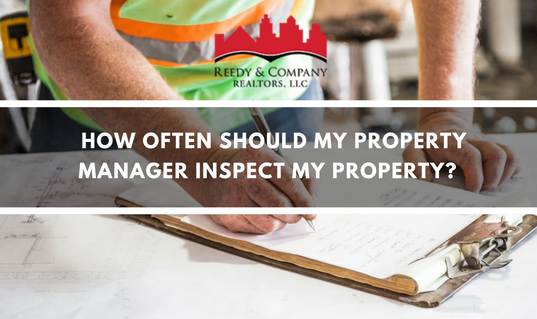The importance of carrying out inspections on your rental property cannot be overemphasized. Chances are that you may fail to notice some problems that could be potentially dangerous had you inspected regularly. However, it is important to find the right balance as you don’t want to perform inspections too often. So, how often is not too much –how do we balance it?
In the lease agreement, including verbiage in regards to your inspection policy and cadence is a good idea. In theory, you have the freedom to visit your rental properties whenever you wish, the exterior, that is. Tenants equally have the right to enjoy their homes and to have some privacy. The right to access the interior of a property is not granted solely upon ownership or in acting as property manager, visiting the home without notice exposes you to unnecessary risk.
Serving your tenants with a minimum of 24 hours’ notice may be required of you. It is paramount that the reason for inspection is conveyed to the tenant along with the date and time you are requesting access. We suggest you confirm your local and State laws to avoid any violations of tenant rights.
When is the best time to carry out a rental inspection?
In spite of having a genuine purpose and giving appropriate notice, it is important to work with your tenant to avoid a blatant inconvenience to them. Ideally, you would provide the tenant with a couple of choices to find a mutually agreeable inspection time.
Here are a few “choice” times when a property inspection is highly suggested…
A New Tenant Moving In
Also referred to as a move-in inspection, this ought to be done any time there’s a new tenant moving in so as to take proper documentation of any pre-existing issues the unit may have – this benefits the property and the tenant.
A Tenant Is Vacating
Also referred to as move-out inspection and as the name implies, this inspection is performed when a tenant vacates the property. The purpose is to determine the changes to any condition or damage to the property during the tenancy and any damages could be off-set by the tenant’s security deposit as described in the lease agreement. Chances are, if your tenants are aware that you carry out such inspections, there’s a higher possibility they will properly care for your property.
For Maintenance Purposes
Each time a tenant calls in a service request it is a good idea for the maintenance team to take a look around, ask the tenant questions such as “is there anything else that we should be aware of” to offset any issues early on. The tenant may not take the time to call in all of the little things that can become bigger things but when asked they will tell you all about it. We all know that happy and contented tenants are never in a hurry to move out, thereby reducing your rate of tenant turnover.
When conducting routine inspections, property-owners are usually on the lookout for things like the tenant’s safety and security, general cleanliness of the property, mold in the bathroom and kitchen areas, functional appliances and fully operational heating system, and so on.
Annual Home Inspections
This is one of the most valuable inspections, and should be conducted annually at a minimum to ensure that a maintenance team member can identify items even the tenant is not aware of: roof, landscape and drainage, HVAC, plumbing, drywall, paint (interior and exterior), electrical, etc. This is a great chance for a dedicated member of the management team to look at every nook and cranny to lessen the implications to the tenant over time. This is also a great time to ensure that anyone living in the home, not on the lease (including furry friends) are documented.
The inspections schedule held by your property manager can be a performance indicator. Reedy and Company is proud of their inspections team and would be happy to talk through it with you, along with sharing the number of services available to each of their managed property investors.



